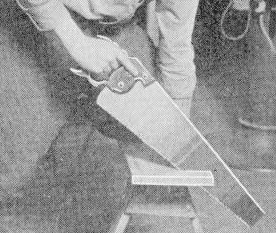
Originally Posted by
Pete Taran

Stewie,
While it's hard to deny that the visual appeal of your handle is striking, it has me wondering how comfortable it will be to use? When I made the first IT handle there was a lot of discussion with Patrick about what it would look like and what period it should come from. We settled on a version from around 1830 with the main consideration being comfort in use.
I'm curious about the thought process you went through to choose a much earlier handle? In my linear way of thinking, if that was the best design for a jointer plane handle, then you would see a handle on that like the planes that were made in their heyday, around 1870. Instead, you see a much more comfortable and larger grip like the photo Steve posted.
If the goal was to see how an early handle feels in use, then that's the answer. If there is another compelling reason, I for one would be interested in your thought process. I presume if you use hide glue to put the handle in place, if you don't like it you can remove it and try another design.
All the best,
Pete
Pete; Paul Sellers wrote a excellent article on "Sizing Saw Handles".
https://paulsellers.com/2014/10/ques...g-saw-handles/
You may also find the following an interesting read. Note the reason given for extending the index finger down the side of the saw handle.

Hold the saw firmly, with forefinger extended along the side of the handle.
How to hold the saw. Just grip the handle so that your forefinger extends along the side of the handle. This helps you “point” the saw along the line and ensures more accurate cuts.
http://www.artofmanliness.com/2009/1...use-a-handsaw/
The finger hole within rear totes of wooden bodied bench planes during the 1700s were sized to fit a 3 finger entry, allowing the index finger to extend clear of the finger hole. No different to that seen within closed saw handles of the same circa.
regards Stewie;







 Reply With Quote
Reply With Quote


